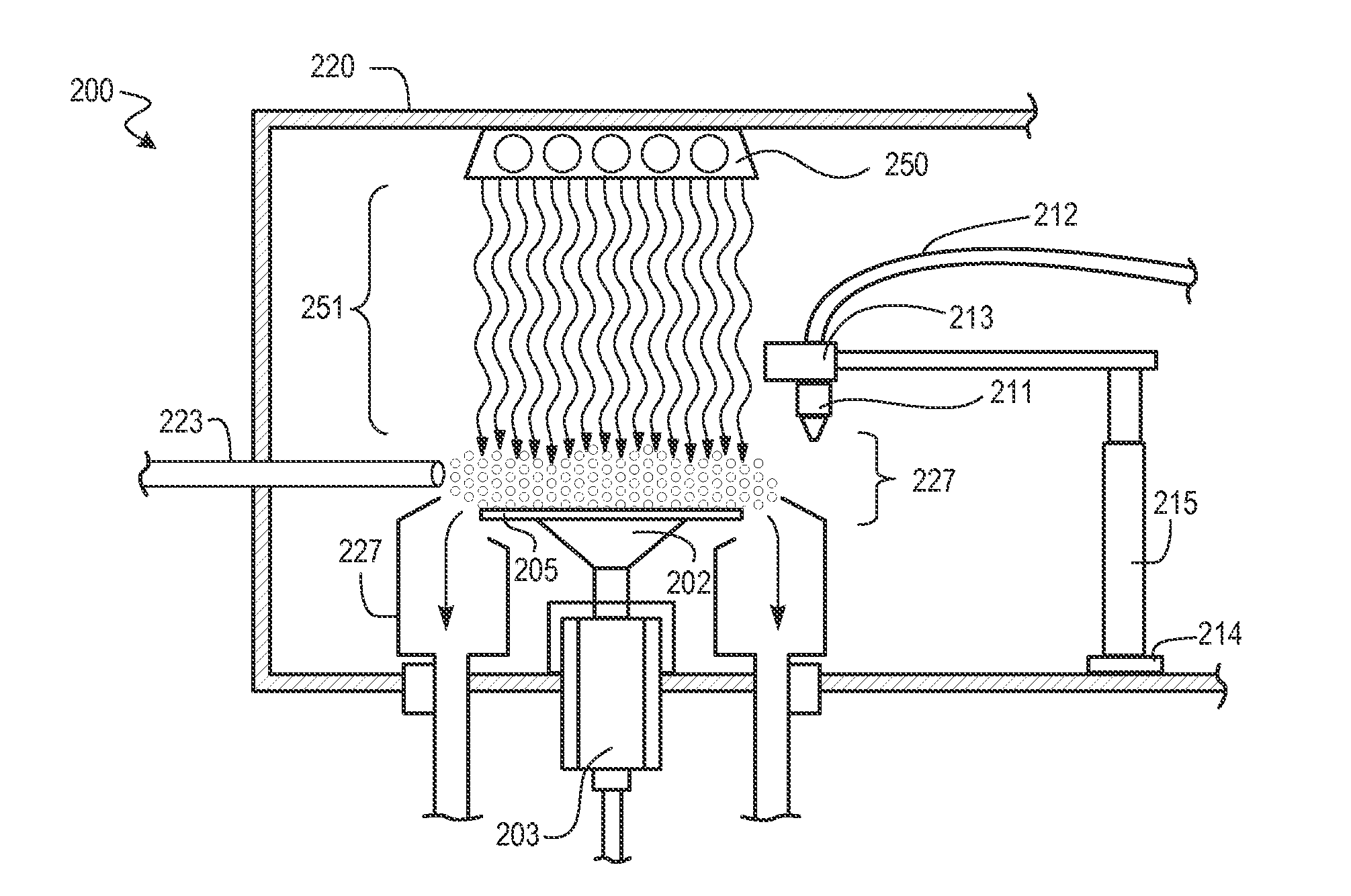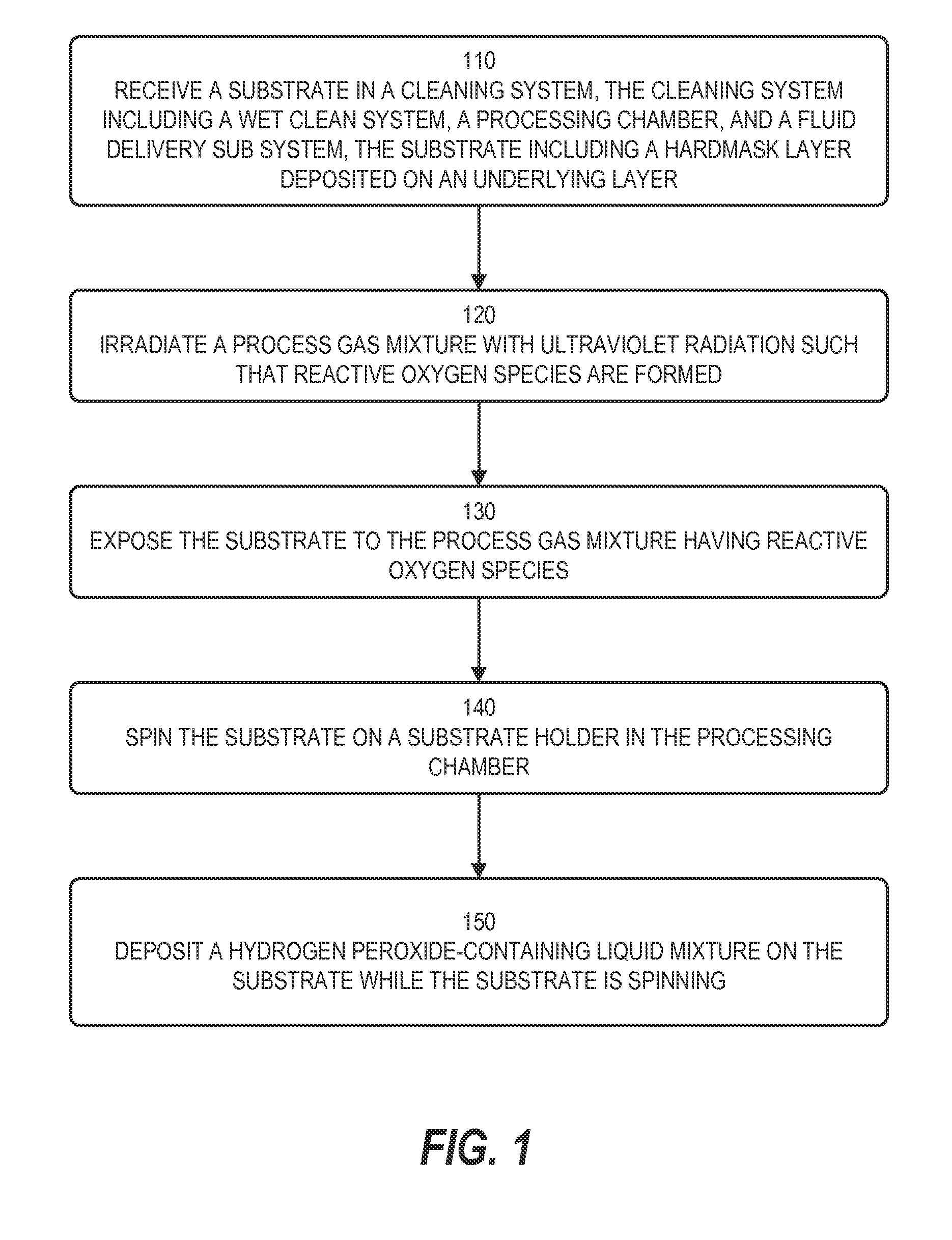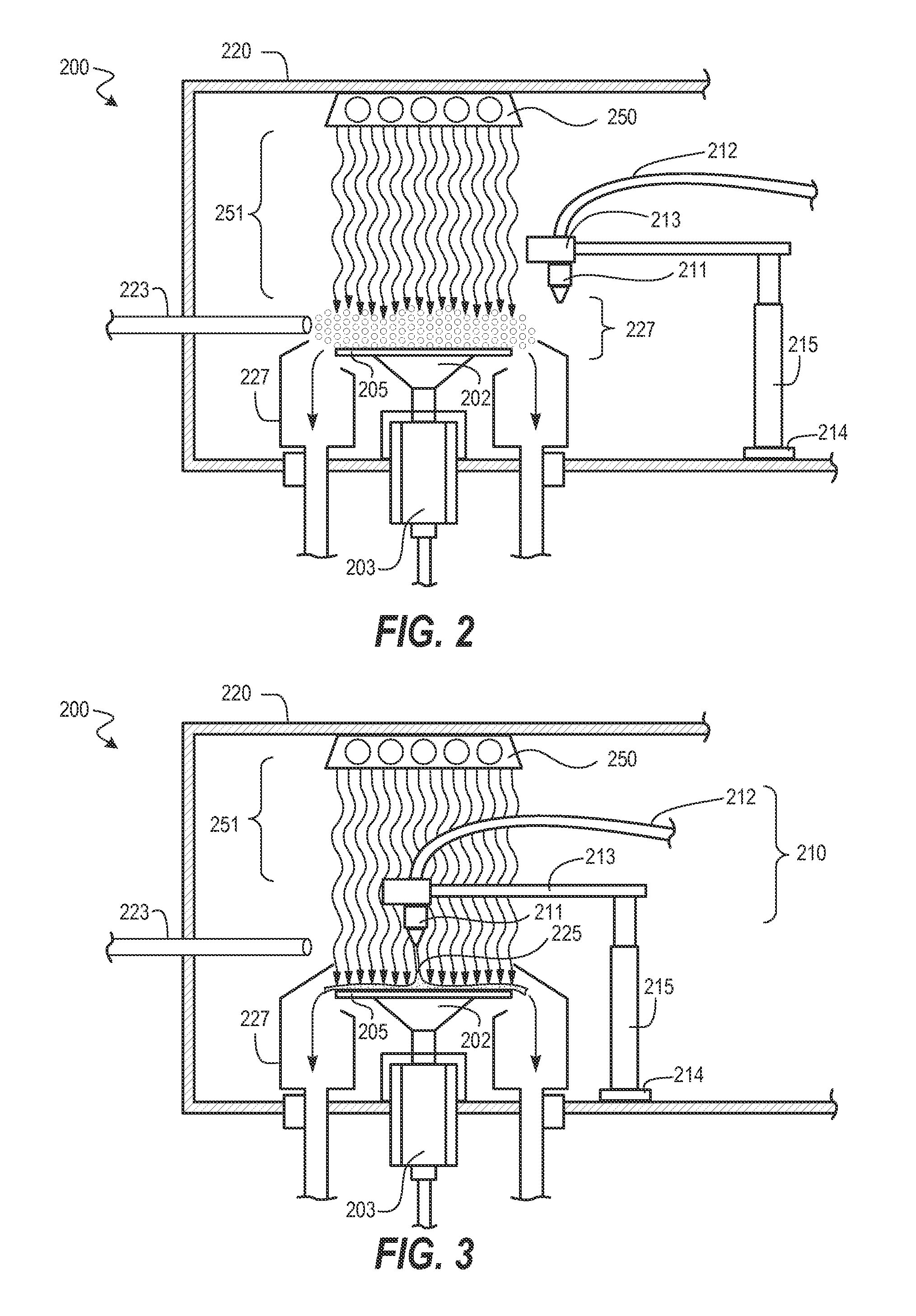Method and Hardware for Enhanced Removal of Post Etch Polymer and Hardmask Removal
a post-etch polymer and hardmask technology, applied in the field of semiconductor processing, can solve the problems of high cost, high cost, and high cost of polymer layer thickening, so as to reduce the trench aspect ratio, reduce the risk of pattern collapse, and increase the cost
- Summary
- Abstract
- Description
- Claims
- Application Information
AI Technical Summary
Benefits of technology
Problems solved by technology
Method used
Image
Examples
Embodiment Construction
[0021]Techniques herein include methods for using an ultraviolet (UV) light exposure wet spin chamber that can operate under atmospheric pressure. At least two process modes can be selected for use. In a first process mode, a substrate is exposed to electromagnetic radiation. The substrate is dry with no liquid on the surface of the substrate. The substrate can be stationary or spinning. The atmosphere can be of several options. The atmosphere can be oxidizing (air, clean dry air, oxygen, low oxygen atmosphere (greater than 0.1 ppm but less than 21%) or peroxide vapor, peracetic acid vapor, acetic acid vapor or other volatile peroxygen compound. The atmosphere can be a reducing environment (hydrogen-containing atmosphere below the lower explosive limit, ammonia environment below the lower explosive limit. The atmosphere can be a combination of oxidizer and reducing gases. Alternatively, the atmosphere can be inert gas ambient. For safety the concentration of each component should be...
PUM
 Login to View More
Login to View More Abstract
Description
Claims
Application Information
 Login to View More
Login to View More - R&D
- Intellectual Property
- Life Sciences
- Materials
- Tech Scout
- Unparalleled Data Quality
- Higher Quality Content
- 60% Fewer Hallucinations
Browse by: Latest US Patents, China's latest patents, Technical Efficacy Thesaurus, Application Domain, Technology Topic, Popular Technical Reports.
© 2025 PatSnap. All rights reserved.Legal|Privacy policy|Modern Slavery Act Transparency Statement|Sitemap|About US| Contact US: help@patsnap.com



